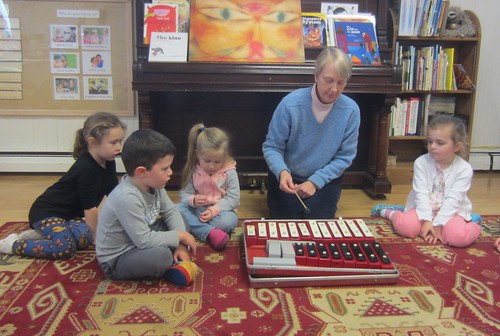 The children were busy outside playing with mud, digging in the sand, pulling around sleds, and playing with friends.
The children were busy outside playing with mud, digging in the sand, pulling around sleds, and playing with friends.
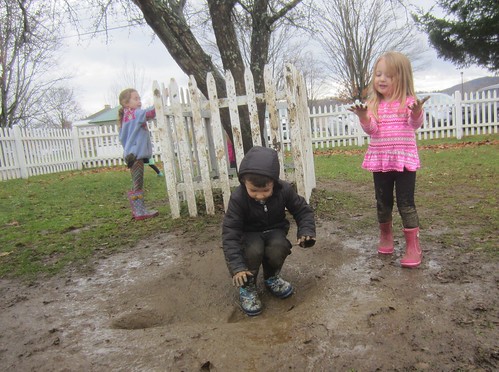
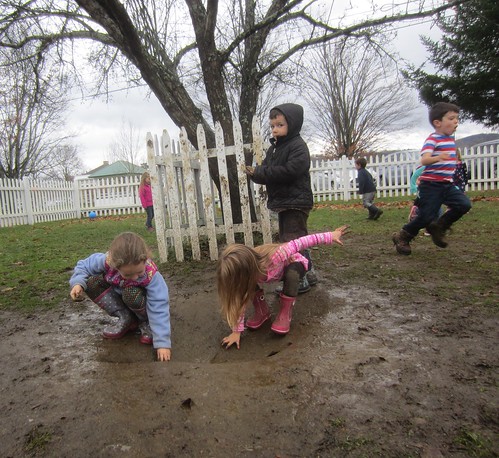

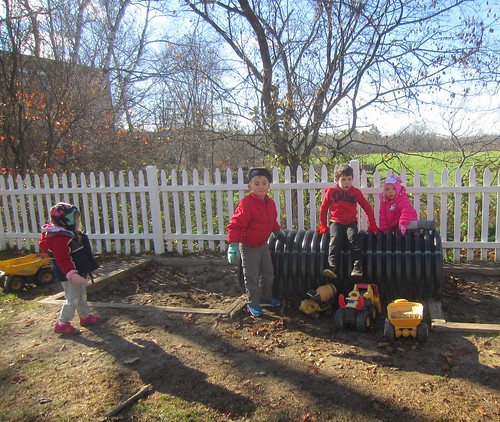
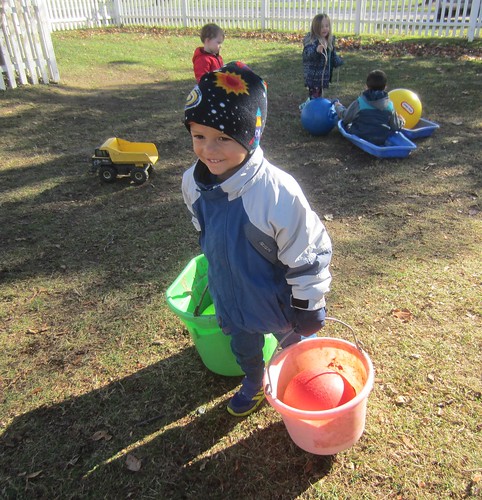
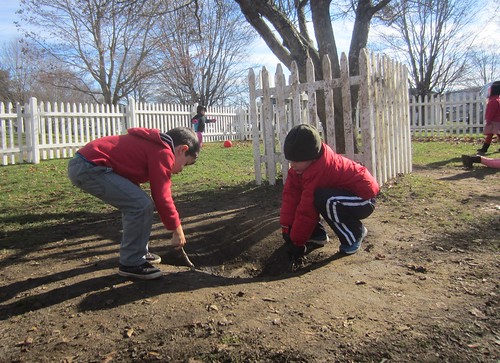
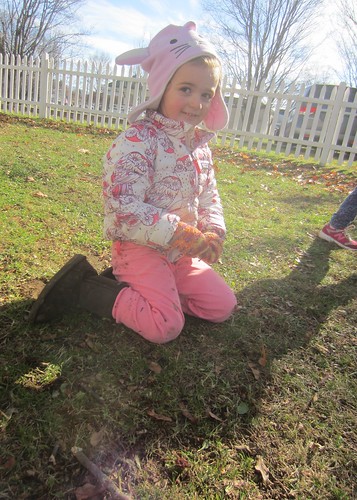
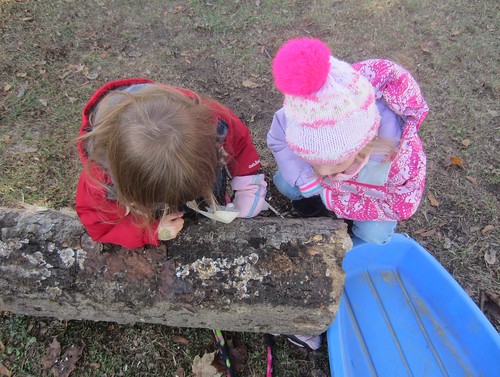
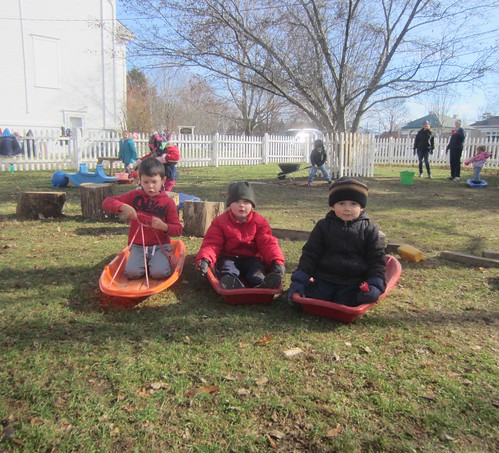 When new tree stumps were discovered in the yard, the children quickly built a balancing course. It started as a line, then became a circle so they could walk around and around without stopping.
When new tree stumps were discovered in the yard, the children quickly built a balancing course. It started as a line, then became a circle so they could walk around and around without stopping.
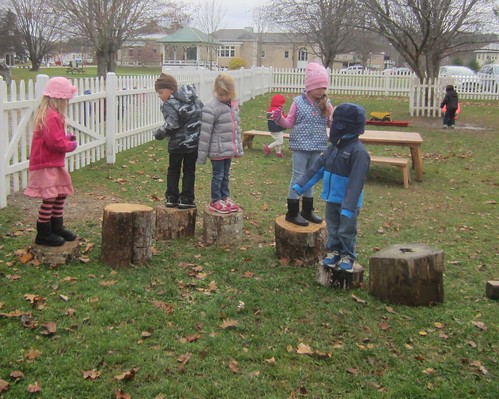

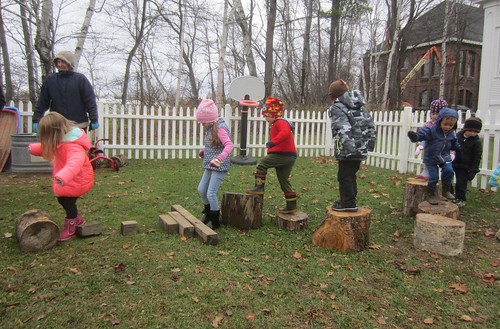


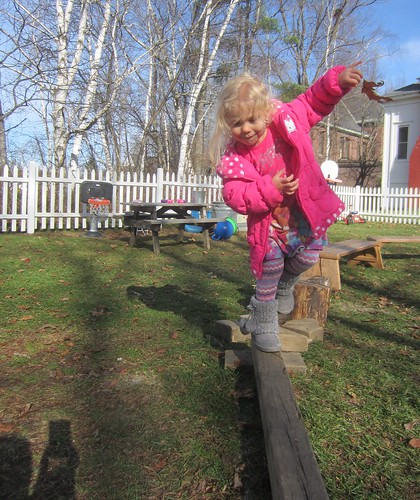
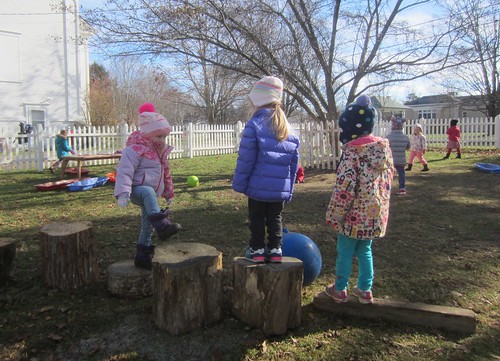 The cold fall air brought frosty mornings. At recess, the children observed that patches of frost remained. After investigating around the playground, they concluded that where the sun had touched, the frost had melted, but where it continued to be blocked by items such as tables, benches, stumps, and trees, the frost remained, leaving frosty grass in the shadows.
The cold fall air brought frosty mornings. At recess, the children observed that patches of frost remained. After investigating around the playground, they concluded that where the sun had touched, the frost had melted, but where it continued to be blocked by items such as tables, benches, stumps, and trees, the frost remained, leaving frosty grass in the shadows.
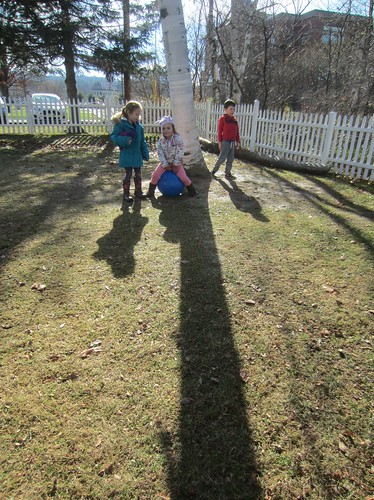 Monday art was once again a study of Paul Klee art, but this time we looked at line drawings filled in with color, including his piece Cat with Bird, and introduced the use of line in art. We read the story using the cat with bird painting as inspiration, called The Cat and the Bird. We also read about the use of line with the stories Lines that Wiggle and The Line. The children then used pastels or crayons to draw pictures, then color them with watercolor paint.
Monday art was once again a study of Paul Klee art, but this time we looked at line drawings filled in with color, including his piece Cat with Bird, and introduced the use of line in art. We read the story using the cat with bird painting as inspiration, called The Cat and the Bird. We also read about the use of line with the stories Lines that Wiggle and The Line. The children then used pastels or crayons to draw pictures, then color them with watercolor paint.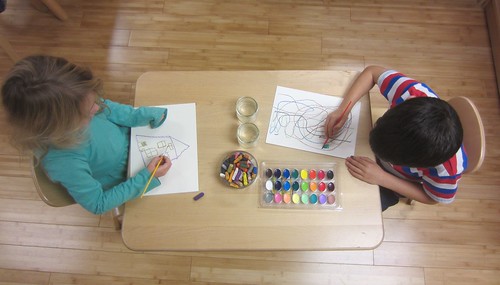

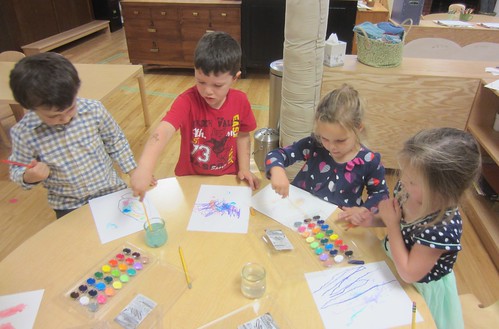
 After art and snack, the children visited the library with Susan and Tammy while potential future students had a play date in the classroom.
After art and snack, the children visited the library with Susan and Tammy while potential future students had a play date in the classroom.
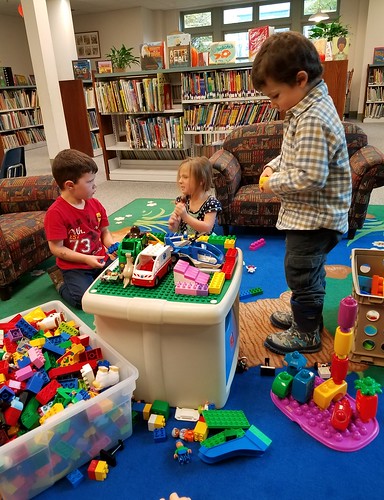
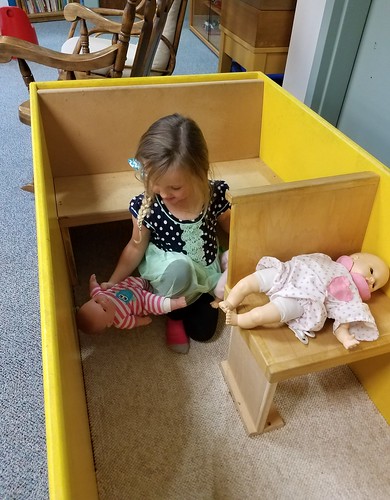 Our discussions of birds continued with an introduction to nest building. We read several stories about birds in nests, and watched parts of a video of a robin building its’ nest. At the art table the children then built their own nests, using hay, yarn, string, and ribbon. Through the rest of the week they also made eggs out of clay and birds from felt.
Our discussions of birds continued with an introduction to nest building. We read several stories about birds in nests, and watched parts of a video of a robin building its’ nest. At the art table the children then built their own nests, using hay, yarn, string, and ribbon. Through the rest of the week they also made eggs out of clay and birds from felt.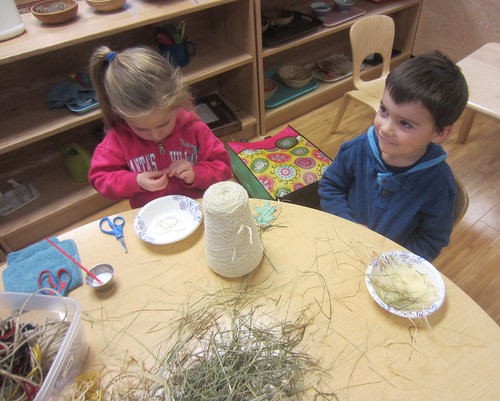
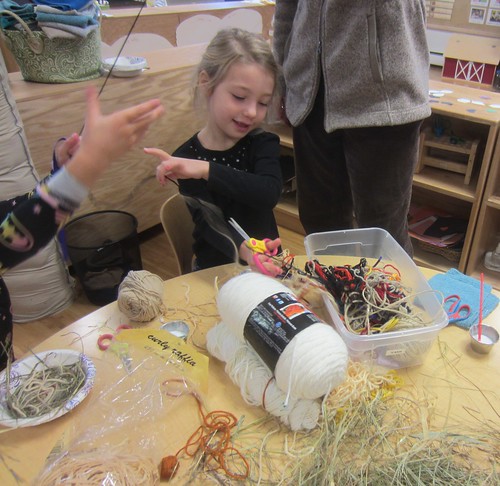
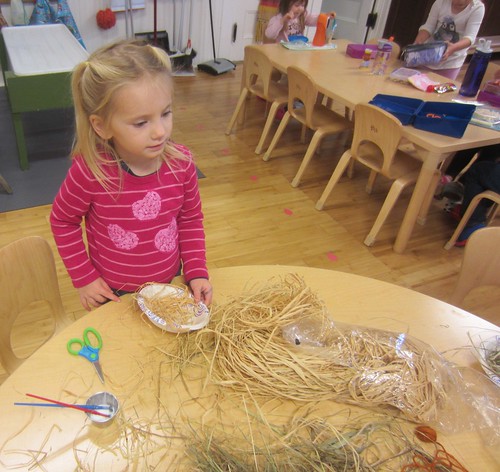

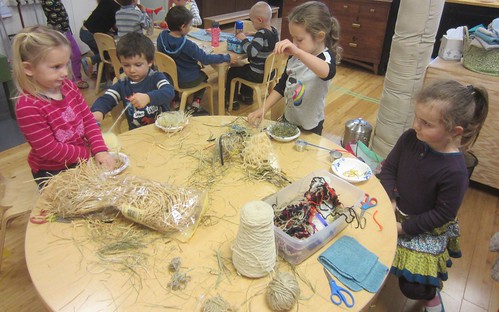

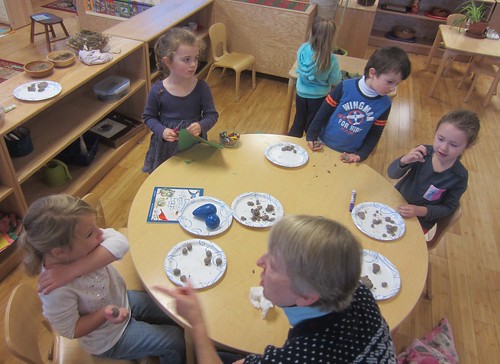
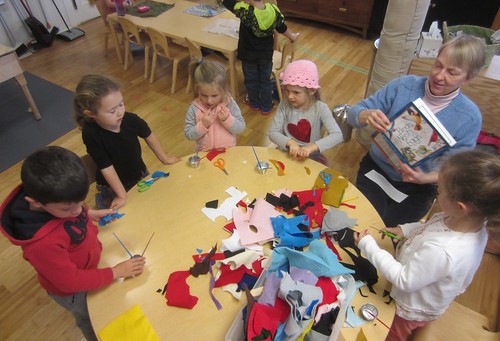
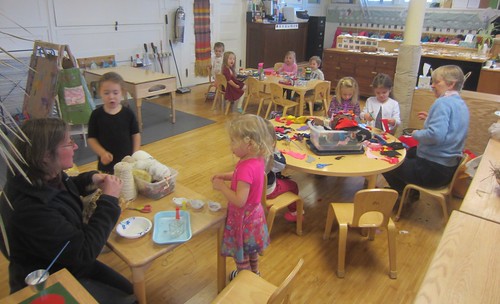
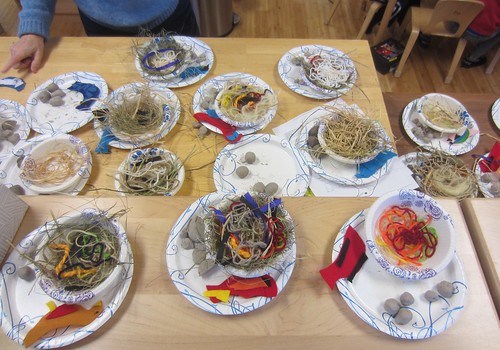 Many airplane co-pilots continued to fly passengers all around the world.
Many airplane co-pilots continued to fly passengers all around the world.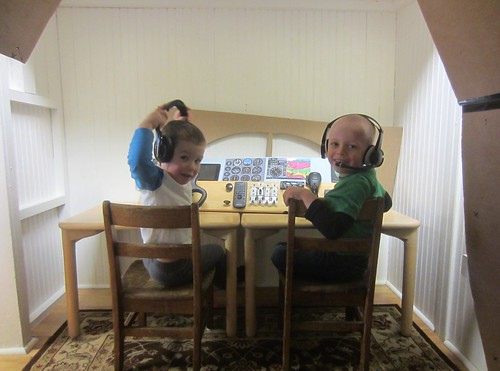
 Zeanny came for Spanish on Tuesday and we continued to learn the calabazas counting song. She read us two stories, one about an abuela (grandmother) who travels the world collecting souvenirs, which we counted, and Oso en un Cuadrado (Bear in a Square) about shapes. We then played a counting game, where one child was a rana (frog) and another was a mosca (fly). A third child was the spinner, who spun the arrow and counted how many hops each could hop forward to see if the rana would eat the mosca or if the mosca would fly away.
Zeanny came for Spanish on Tuesday and we continued to learn the calabazas counting song. She read us two stories, one about an abuela (grandmother) who travels the world collecting souvenirs, which we counted, and Oso en un Cuadrado (Bear in a Square) about shapes. We then played a counting game, where one child was a rana (frog) and another was a mosca (fly). A third child was the spinner, who spun the arrow and counted how many hops each could hop forward to see if the rana would eat the mosca or if the mosca would fly away.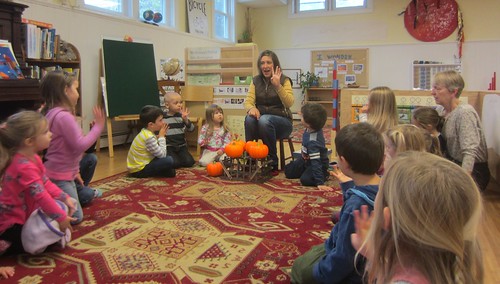
 On Wednesday morning the children were buzzing, buzzing, buzzing, so some of us took some time after morning meeting to get outside and run, run, run! We felt much more settled after letting out some of that energy, so we were better able to focus on our morning.
On Wednesday morning the children were buzzing, buzzing, buzzing, so some of us took some time after morning meeting to get outside and run, run, run! We felt much more settled after letting out some of that energy, so we were better able to focus on our morning.
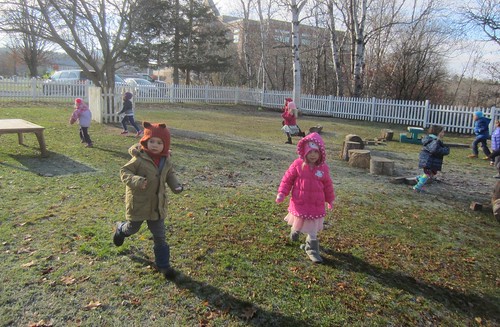 We began to discuss the human body and being healthy through eating healthy foods, which provide nutrition. We did a digestive system demonstration. We pounded crackers with a hammer, to represent teeth chewing food, then discussed how they would be combined in the mouth with saliva, then pushed down the esophagus into the stomach. We placed the crackers and a banana in a bag with some water (saliva), then added stomach acids (coke) and everyone took turns smooshing it. We measured out a piece of string that was 27 feet long – the length of the digestive system – then poured our “stomach” contents into the intestines (a piece of stocking) and watched as the water was pushed out and “absorbed” by the body, then finally the waste was pooped out at the end. We read the story Everyone Poops by Taro Gomi, and discussed how everyone and everything that eats poops.
We began to discuss the human body and being healthy through eating healthy foods, which provide nutrition. We did a digestive system demonstration. We pounded crackers with a hammer, to represent teeth chewing food, then discussed how they would be combined in the mouth with saliva, then pushed down the esophagus into the stomach. We placed the crackers and a banana in a bag with some water (saliva), then added stomach acids (coke) and everyone took turns smooshing it. We measured out a piece of string that was 27 feet long – the length of the digestive system – then poured our “stomach” contents into the intestines (a piece of stocking) and watched as the water was pushed out and “absorbed” by the body, then finally the waste was pooped out at the end. We read the story Everyone Poops by Taro Gomi, and discussed how everyone and everything that eats poops.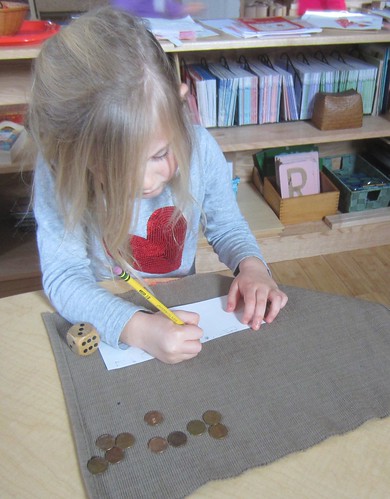
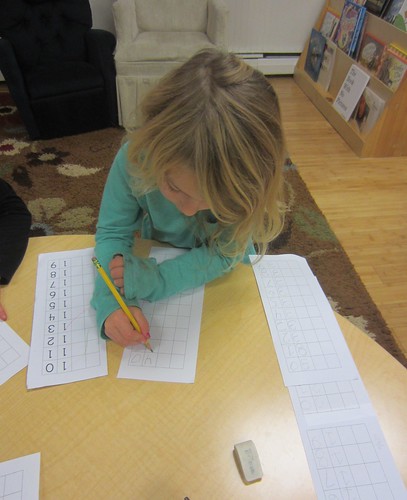
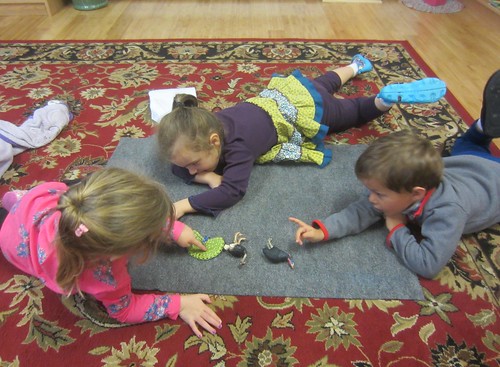

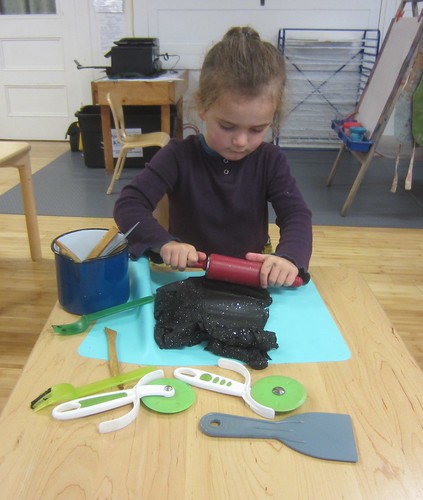
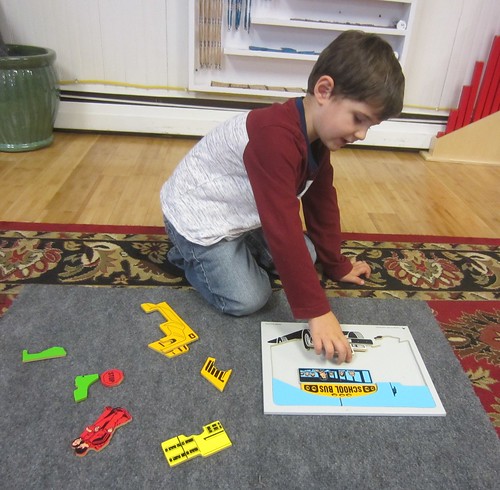
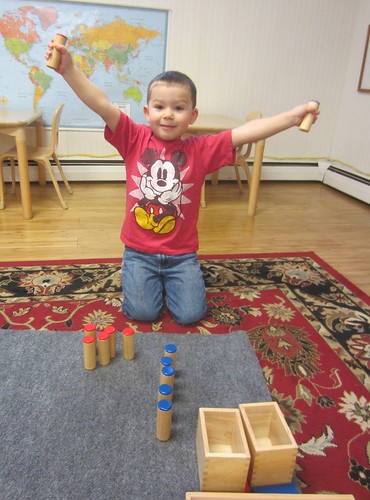
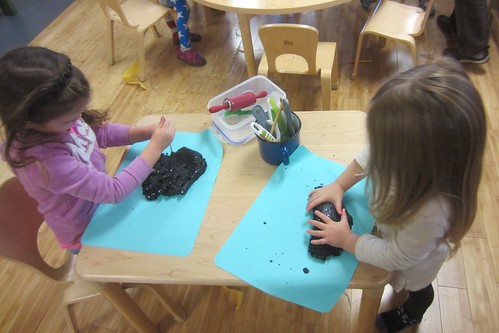
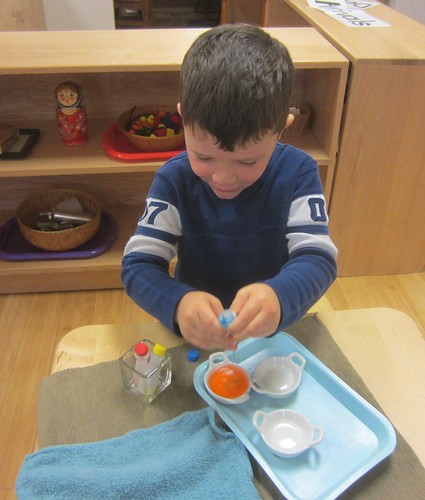
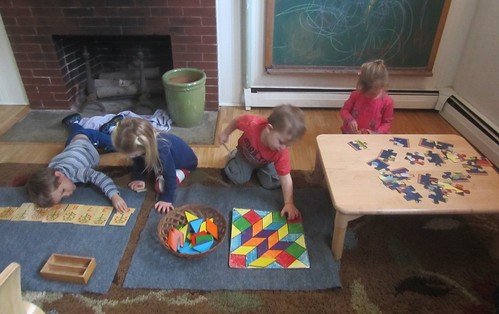
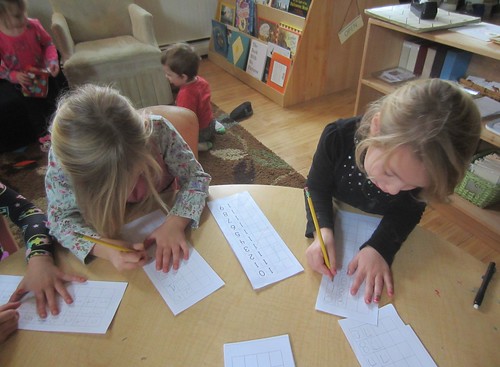
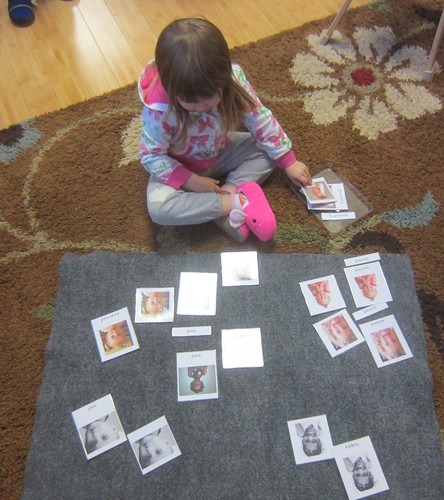

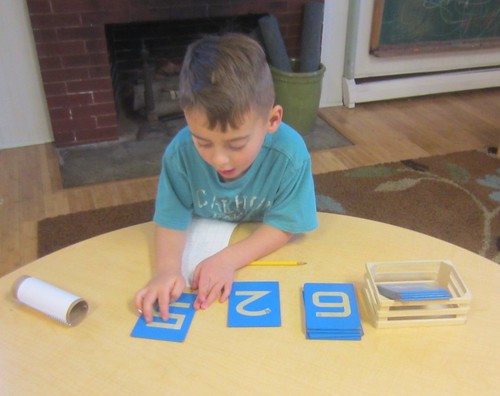

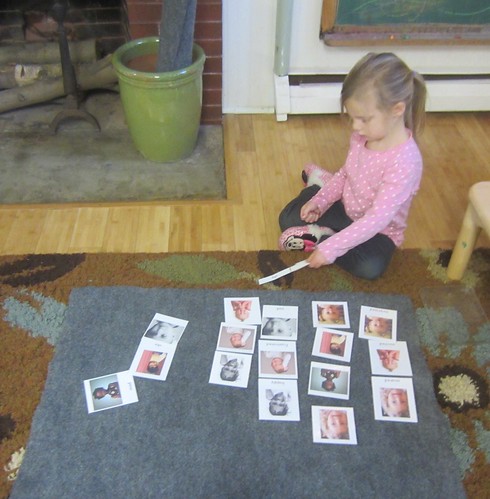
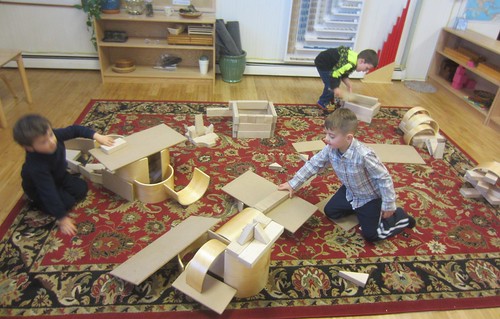 We read a third Stone Soup story and discussed what themes are similar through the three books we have read so far. The children observed that in each book there were people that were hungry and that they made soup from a stone, though they acknowledged that it was the other ingredients added that made the soup, not the stone. We will continue to read and look for themes.
We read a third Stone Soup story and discussed what themes are similar through the three books we have read so far. The children observed that in each book there were people that were hungry and that they made soup from a stone, though they acknowledged that it was the other ingredients added that made the soup, not the stone. We will continue to read and look for themes.
For music, Susan brought out the glockenspiel and played some tunes. We listened then tried to identify what she was playing. She then played some high notes and low notes while we had our eyes closed. We listened closely to identify if they were higher or lower than the first note.
